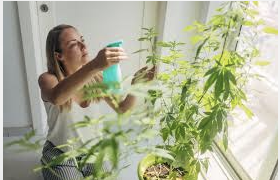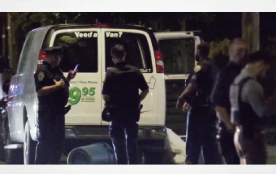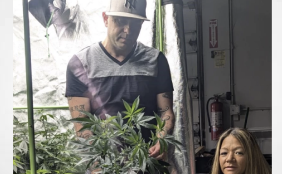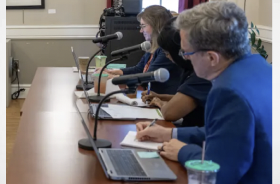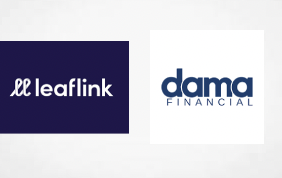New York State is on the cusp of legalizing cannabis for recreational use. Will it have the social and economic impact many legislators and advocacy groups hope for?
Initially put forth in the 2019 legislative session, legalizing recreational marijuana took a backseat to more wide-ranging criminal justice reforms, as New York overhauled state bail and discovery practices. Now that those initial reforms have been implemented, legalizing marijuana has once again taken center stage as a way to address past wrongs and make the criminal justice system more equitable.
Currently, there are two marijuana bills pending before the state legislature. One is the stand-alone Marijuana Regulation and Taxation Act (MRTA) and the other is the Cannabis Regulation and Taxation Act (CRTA), which the governor included in the FY2022 executive budget. Both bills seek to legalize adult recreational use of marijuana and provide an economic boost to communities disproportionately impacted by the decades-long war on drugs. If either bill becomes law, New York will follow closely on the heels of its neighbor New Jersey, which earlier this year legalized cannabis possession and use for adults age 21 and older (A21 – The New Jersey Cannabis Regulatory, Enforcement Assistance, and Marketplace Modernization Act). Similar to New Jersey, the New York bills provide for a heavy regulatory framework, reinvestment in communities disproportionately impacted by the failed war on drugs, and criminal justice reforms. The competing New York bills are closely aligned in their stated goals; however, they have some key differences in achieving the primary policy objectives of legalization and economic development. Where does this legislation fall short? And, which bill will have more of a positive impact on the people of New York?
The Marijuana Regulation and Taxation Act (MRTA)
MRTA is currently before the finance committee in the state senate (Senate Bill S854) and the codes committee in the state assembly (Assembly Bill A1248). MRTA provides for the legal production and consumption of marijuana by individuals age 21 and older; establishes licensing requirements, including fees; and includes a social and economic equity plan intended to promote diversity in the industry. The goal of the social and economic equity plan is to award 50% of licenses to applicants from historically underserved populations, such as communities disproportionately impacted by the enforcement of cannabis prohibition, women and minority-owned businesses, and individuals previously convicted of a marijuana-related offense.
MRTA also creates a Cannabis Control Board responsible for regulatory oversight of cannabis production, including sole discretion over licensing; establishment of standards for cultivation and processing; investigations, inspections, and hearings, including the power to subpoena witnesses and documents; and data collection. Under MRTA, the governor would appoint three members of the board, subject to senate approval, and the president pro tempore of the senate and assembly speaker would appoint one member each.
Under MRTA, extensive amendments will be made to the Penal Law to allow for personal possession of cannabis as well as the cultivation, production, and distribution of cannabis with proper licensing. MRTA also amends the Criminal Procedure Law to allow prior convictions for marijuana offenses to be vacated, dismissed, and expunged. In an effort to leave no doubt as to the legality of cannabis under MRTA, the bill explicitly states that no person shall be subject to disciplinary action by a business or occupational or professional licensing board or office, nor shall any school or landlord refuse to enroll or lease to a person, solely based upon the person’s engagement in activity permitted by MRTA. Lastly, MRTA provides for community grants and tax revenues to be invested into communities disproportionately impacted by the war on drugs.
The Cannabis Regulation and Taxation Act (CRTA)
CRTA is currently before the state legislature as part of the FY2022 executive budget revenue bill (Revenue Article VII, Part H). Similar to MRTA, CRTA provides for the legal production and consumption of marijuana by individuals age 21 and older; establishes licensing requirements and fees; and includes a social and economic equity plan. CRTA’s equity plan is slightly narrower than MRTA’s, with no target percentage, but does have the stated goal of awarding licenses to applicants from underserved populations.
CRTA creates the Office of Cannabis Management (OCM) with exclusive regulatory authority over the cannabis industry. Similar to MRTA’s board, OCM will have sole discretion over all licensing; to regulate the standards of cultivation and processing; to conduct investigations, inspections, and hearings; and collect industry data. Under CRTA, the governor appoints all members of OCM’s board and has authority to remove any member at her/his discretion.
CRTA also seeks to amend the Penal Law to allow for personal possession of cannabis and the cultivation, production, and distribution of cannabis with proper licensing. CRTA’s proposed Criminal Procedure Law amendment allows for resentencing in accordance with the new Penal Law sections related to cannabis. As with the MRTA, CRTA provides for community grants and tax revenues to be invested into communities disproportionately impacted by the war on drugs.
Impact on cannabis industry and New York communities
The New York cannabis industry will be heavily regulated. Both MRTA and CRTA contain more than 100 pages of detailed regulatory language, outlining the production, distribution, and consumption of cannabis, and require amending multiple sections of various New York laws, including the Penal Law, Tax Law, and Public Health Law. The application process will most likely be burdensome to many, especially members of marginalized communities. The level of bureaucratic red tape and regulatory oversight outlined in both the MRTA and CRTA may very well discourage many members of marginalized communities from participating in the fledgling industry. Moreover, both bills place near-total regulatory authority in the hands of a board of political appointees, such positions are ripe for abuse of authority and arbitrary decision-making.
The proposed legislation emphasizes the need for economic development and criminal justice reform in marginalized communities. The bills aim to achieve the economic goals by giving consideration to underserved minority applicants and communities disproportionately impacted by the war on drugs as well as providing grants and cannabis tax revenues to these communities to help drive economic development. Under the CRTA, licensing is left to the sole discretion of political appointees. The MRTA, on the other hand, targets 50%-ownership rate for underserved populations.
The bills are most effective in reforming the criminal justice impact of cannabis distribution and consumption. Both bills provide for the legal possession of cannabis by persons 21 and older. Possession of cannabis beyond the legal limit is still unlawful as is cultivation, production, and distribution without the appropriate license. However, the level of crime and punishment will be significantly reduced. For example, under either bill, unlawful possession of cannabis for personal use (MRTA—less than 16 ounces and CRTA—less than 2 ounces) becomes a violation, no longer a crime. MRTA goes further by amending the Criminal Procedure Law to allow prior convictions for marijuana offenses to be vacated, dismissed, and expunged, in an effort to address the harms from past criminal enforcement actions. In a similar vein, CRTA allows for individuals to petition the court for resentencing in conformance with the new laws. Both bills would almost certainly reduce the criminal justice impact on marginalized communities. But, to what extent? With either bill, the question remains as to whether members of marginalized communities will lack the resources necessary to navigate the maze of this highly regulated industry. If so, it may lead to an underground market and a continued disproportionate criminal enforcement impact on marginalized communities.
What’s next?
Legislation is never perfect, but there should be a noticeable benefit to criminal justice reform under either bill. Ultimately, the legislature will determine which bill they believe to be in the best interest of the people of New York. Our Cannabis team will continue to monitor the legal and regulatory landscape and provide updates on these issues to help your business prepare for both challenges and opportunities.
The foregoing has been prepared for the general information of clients and friends of the firm. It is not meant to provide legal advice with respect to any specific matter and should not be acted upon without professional counsel. If you have any questions or require any further information regarding these or other related matters, please contact your regular Nixon Peabody LLP representative. This material may be considered advertising under certain rules of professional conduct.

